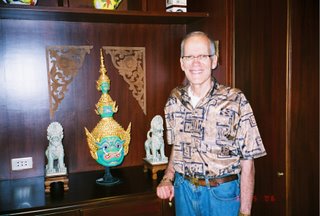The Way to End Slums
Foreign Correspondents Club of Thailand. Bangkok. September 13, 2012. The Asian Coalition for Housing Rights ("ACHR"), which is based in Thailand, but which operates throughout Southeast Asia, has a great deal of experience in empowering slum dwellers to tear down or convert their slum houses to livable housing, and to do so without the expenditure of a lot of money, in fact, with a budget of only US$58,000 per city. How it accomplishes this was detailed in a new documentary film "The Way to End Slums," which was shown for the first time in Thailand at the FCCT on September 13. It was very impressive. The underlying methodology of ACHR is to enlist the labor, skills and finances of the slum-dwellers themselves to build their own communities. ACHR does not do any of the work, nor supply money or materials; rather, it provides the organizational abilities needed to harness the energy and skills of the urban poor to radically change their own existence. The results, as shown in the film, are admirable.













